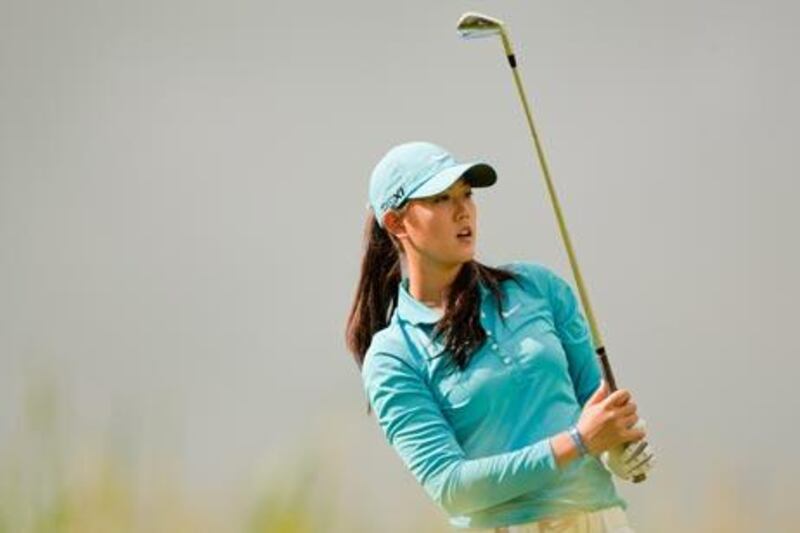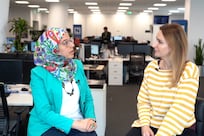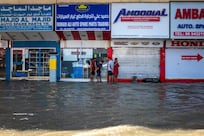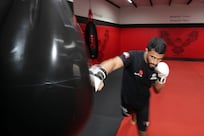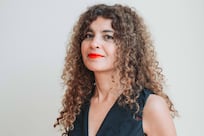Eight years ago, when Michelle Wie was still in school, the innocent 14-year-old golf prodigy was asked about her burgeoning celebrity status.
"Being famous is pretty cool," she replied. "Like I went to this restaurant, and they gave me free dessert."
That year, at the 2004 Sony Open in Hawaii, she had become only the fourth female, and the youngest, to compete against the men in a PGA Tour event and was being hailed as the Tiger Woods of the women's game.
"Taking gender out of the equation, she's ahead of Tiger," John Hawkins, of Golf World, said at the time. "She could do more for golf than Tiger Woods."
Those expectations were not entirely delusional. Wie had carded a second round score of 68 in front of her home fans and though she missed the cut by a stroke, her score was good enough to tie or beat 64 of the best male golfers in the world.
A year earlier, Wie had become the youngest player to make an LPGA cut at the Nabisco Championship with a 66 in the third round. Later in June, she won the Women's Amateur Public Links tournament, becoming the youngest person ever, male or female, to win a USGA adult event. Later in 2003, she also made the cut at the US Women's Open when she was still just 13.
Initiated into the game at the age of four, Wie was beating her parents at the age of seven or eight. Her mother, Bo, was the 1985 South Korean amateur champion and her father Byung-wook, a professor at the University of Hawaii, has been a two handicapper. By the age of 10, Wie had already shot a 64.
Now 22, Wie has not exactly delivered on her promise. Her celebrity and bank balance have grown over the past eight years, but there are only two trophies on her shelf at home - the 2009 Lorena Ochoa Invitational and the 2010 Canadian Women's Open.
"I have experienced a lot of ups and downs, a lot of injuries, but I've learnt a lot," Wie said yesterday as she prepared for the Omega Dubai Ladies Masters at the Emirates Golf Club.
"I have no regrets. I have tried my hardest, so there's nothing I can do. Obviously this year I haven't played as well as I wanted to, but I definitely want to end on a high note."
Wie injured her left wrist in January, 2007, breaking three bones when she fell during a casual run. She decided to keep playing golf and when some people questioned her decision before the start of the US Open, she said: "Come on, this is the US Open."
The following period, however, was a frustrating one for Wie as she waited for her wrist to heal. "Michelle couldn't have cared less if she'd never played again," David Leadbetter, her coach, was later quoted as saying.
Wie, however, stayed strong and has been on an upwards climb since May, 2009, when her wrist started feeling "100 per cent" and now she is hungry for titles.
"I want to try and become the best I can be, have a lot more tournament wins under my belt and we will see," she said.
The Dubai Ladies Masters is the season-ending Ladies European Tour event and Wie is determined to end the year on a high with the title here. Her best this year has been a second at the LPGA Thailand in February and she has six other top-10 finishes in 20 starts.
"Something happened this summer where I just didn't play very well," she said. "You have those times where nothing goes your way and you have to grind it out for a couple of weeks. At the end of it, you are like, 'I didn't play really well for that stretch'.
"I was working on my swing a little bit; I had some major swing changes, so that kind of did some of that. But I tried my hardest and I definitely do want to win before the end of the year."
Wie will be heading back to Hawaii from Dubai for a short break and the coming period could be spent pouring over her text books. She has been studying at Stanford University since 2007 and hopes to receive her degree in communications by March.
"I don't know if I will continue my education further than that, but we will see," she said.
Annika Sorenstam, the women's golf great, had criticised Wie's decision to pursue her degree saying: "I think her focus, in my opinion, should be more on golf.
"She's very distracted with school, doesn't really play as much full time as I thought she would. I think she needs to come out and compete more regularly."
Hurt at the criticism, Wie said in a later interview: "Growing up in the spotlight, playing tournaments when I was 12, I grew up a lot faster than maybe I had to.
"Going to college helped me be a normal 18 year old and that was something I needed. I could keep training, but I needed something more to help me be well-rounded."
Wie had also faced criticism for her appearances on the men's tour and she said she enjoys competing against them, but for the moment, she is focused on winning more among the women.
"I am very lucky to have a very well-rounded life, to experience all the things that I have," she said. "But right now, I feel like only having to try hard in the women's.
"I definitely want to win a lot more tournaments on this side. It's something that I am trying to focus on right now. Trying not to focus on too many things … one thing at a time."
She still dreams of playing the Ryders Cup though and competing at the Masters.
"Dreams are dreams," she said. "Whether people think they are realistic or not doesn't matter. I have to dream high."
